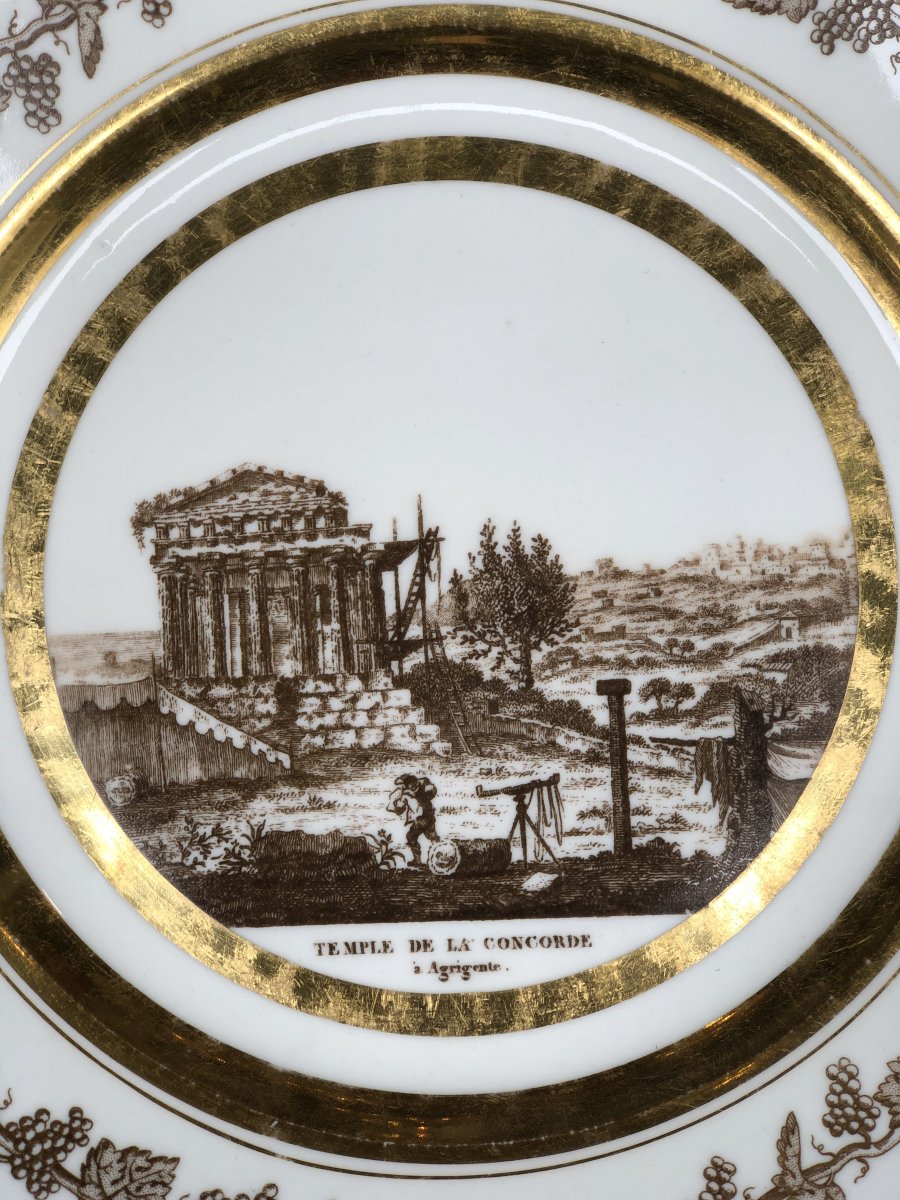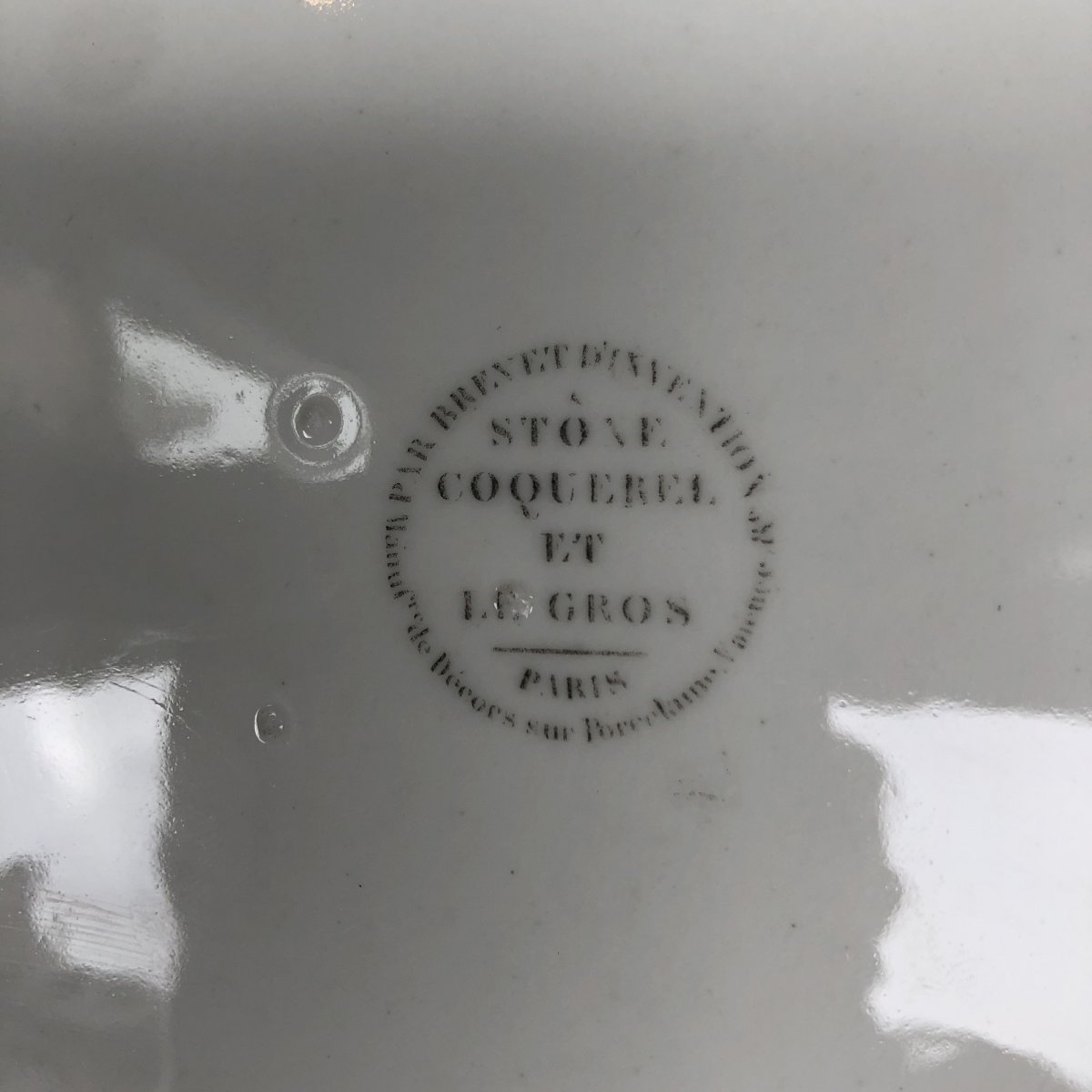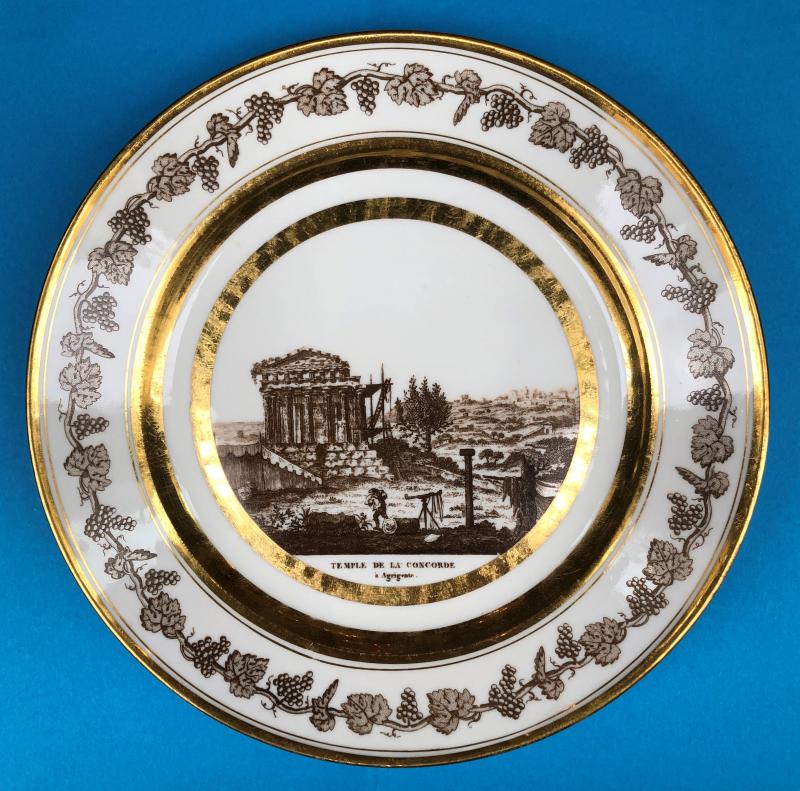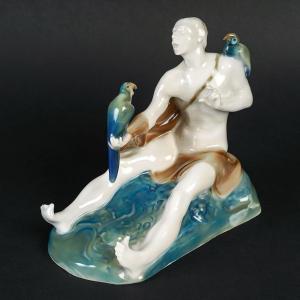Conditions: Very good condition
Diameter: 23 cm
Documentation François Antoine Legros (1772 - 1848) had worked in Sèvres from 1803, where he executed prints according to a process of his invention, but was never officially received there. He perfected his process in order to apply it on all kinds of supports including porcelain, earthenware, fine earthenware, crystals, etc. He joined forces with John Hurtford Stone and Athanase Marie Martin Coquerel, already associated with the fine earthenware factory in Creil. The three partners filed a patent for invention on February 28, 1808 for the Legros d'Anizy process and created a company to operate it located at 9, rue du Cadran. Bibliography: Régine de Plinval de Guillebon, Faience and porcelain of Paris 18th-19th centuries, Paris, Faton, pp. 380-382.
https://amisfaiencefine.fr/IMG/pdf/dff-11.pdf
History of the Temple of Concord of Agrigento: This temple dates from 430 BC. It is unknown to whom it was dedicated. But two statues found inside suggested that it could be dedicated to Dioscuri, Castor and Pollux. But the elements are lacking to learn more about this. On the other hand, what we do know is that this pagan temple became a church and even a cathedral by Bishop Gregory (6th century). It will remain a place of worship until 1788, when it was restored to its aspect of an ancient temple.




































 Le Magazine de PROANTIC
Le Magazine de PROANTIC TRÉSORS Magazine
TRÉSORS Magazine Rivista Artiquariato
Rivista Artiquariato